The Magic & Myths of Watercolour Painting
Internationally acclaimed artist and author of ‘Painting Expressive Watercolour‘ Bridget Woods, shares with us her passion for watercolour, dispels some myths associated with this medium and provides some practical advice for painting on the go.
My passion for watercolour started with Ralph Thompson painting on the television. A hand and brush would appear and with a few calm strokes, magically depict a wild animal. Mesmerised by the power of a single wet brush mark to convey so much, I was, aged 8, driven to save my pocket money and buy a bamboo-handled brush and practical book on Chinese brush painting.
My reasons for choosing watercolour
Objectively and practically, watercolour is fast to use in changing weather conditions and to capture movement e.g. clouds, people, animals, water. The paint (only three colours are absolutely necessary), the palette, brushes, paper and water are compact and light to carry. No mess. No fumes. Little cleaning up.
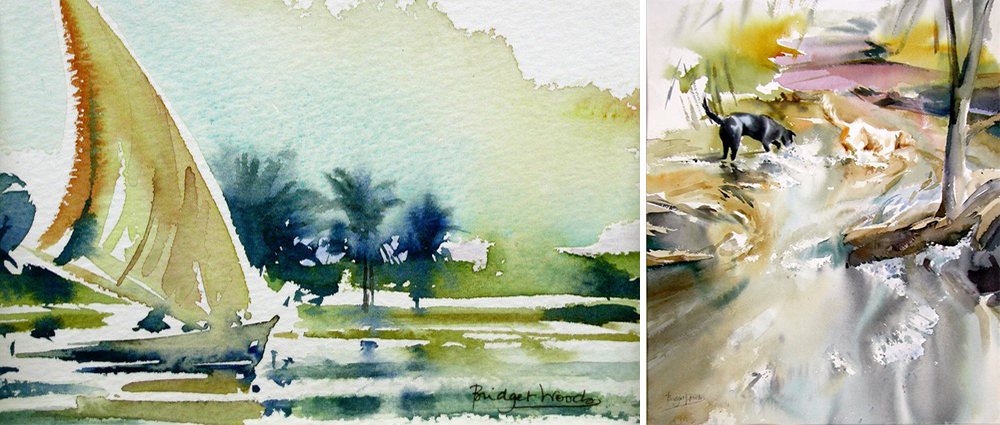
Subjectively, I think watercolour is an honest medium – each layer of paint has a semi-transparent quality that reveals previous marks. It is a time witness – its lucidity gives a notion of recording time. It enables the speed to express a feeling, thought, design, idea, atmosphere, dream, invented story before it slips away. For me watercolour can express not just the hard facts but the understated nuances that touch the heart.
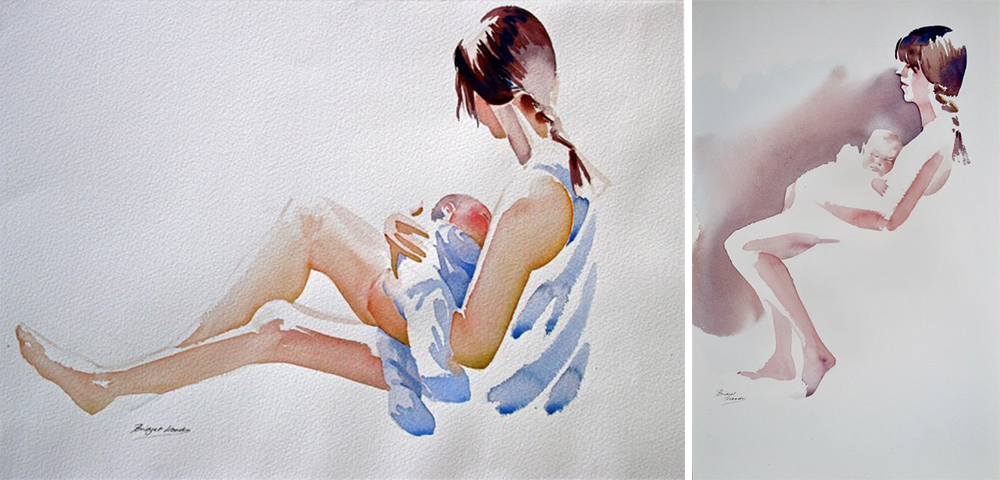
After 63 years, I still have the desire to further explore the potential of watercolour. I love watching paints running together in water and enjoy the visceral experience of using my fingers and nails directly into wet paint.
It’s fun playing with water – watching the water do what YOU want it to while it is doing what IT wants to do.
There are several myths about painting watercolour
“It’s very difficult” though the weather, environmental conditions and the painter’s mood can unpredictably affect the outcome, working with earth – pigment, water – vehicle, air – drying, fire – evaporation, fuses the artist with the fundamental elements of our existence. So, if the natural behaviour of water is respected and observed, it does not only do what you want, but will inevitably express those factors. ie the atmospheric conditions of weather and your mood!
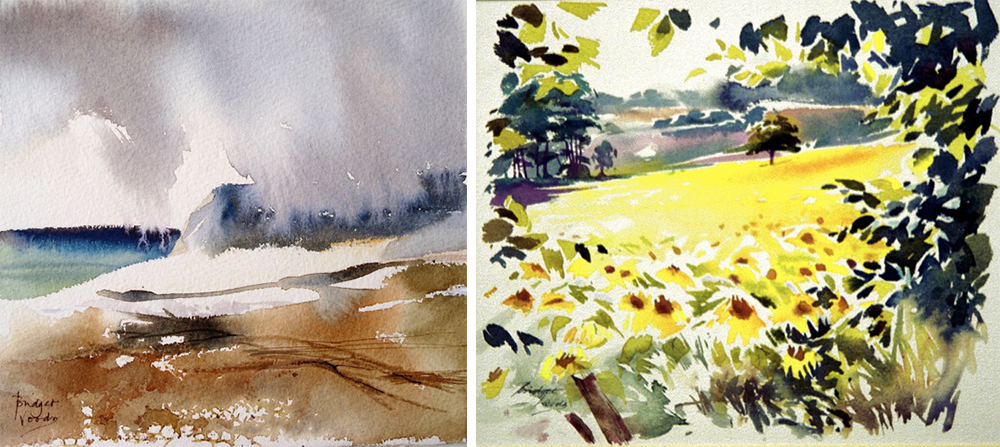
“It’s wishy washy and less powerful than other media” – expression is the choice of the artist!
“It’s an easy medium to learn” – anyone can do it, but only the strong-minded succeed with this rewarding pursuit! If, like King Canute, you have an expectation of total control, water will encourage, even oblige, you to respectfully walk alongside…
“It’s difficult because you can’t paint white over the top of paint” – you don’t even have to paint the white areas because the white paper has already created them! I have developed methods to paint around ‘white, bright and pale’ subjects that can describe fine detail and are fun to use. For the image, below left, ‘Sparkling Nile’, I wet the paper, leaving only the sun, building and water-sparkle shapes dry. Then, working wet into wet, the painting was completed in a few minutes.
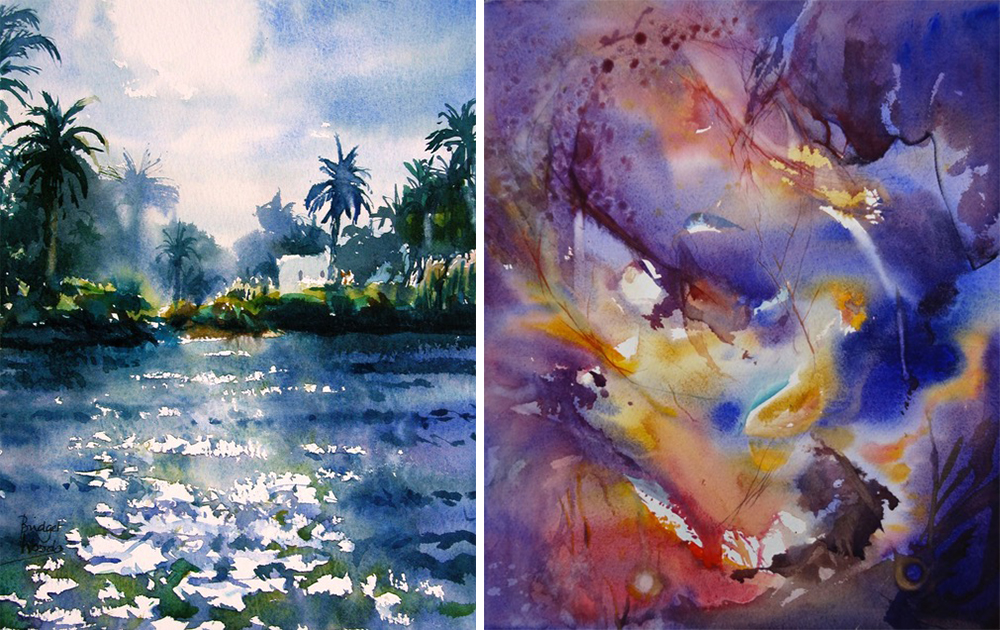
“It’s difficult because the water runs out of my control” – use this quality for quickly covering large areas with different colours or tones of paint and to learn to live in the moment and have fun!
“It’s too heavy or big to carry” – a Winsor and Newton Field box, 3 x primary colours, 2 x filled aqua brush brushes and a small watercolour book or postcards in a sealable plastic bag is light. Using a homemade zigzag of Arches paper this kit only weighs only 6ozs/175g and can fit in a jacket pocket or hang on a belt or coat button while I’m walking.
“My painting will fade, unlike oil paint” – artist grade watercolour paints are made with a variety of naturally occurring or synthetic stable pigments. Artists in all media can easily select a palette of extremely lightfast colours which will not fade over time.
My essential materials for plein air
I never resist buying exciting different and new colours but, outdoors, I carry the least (size and weight) to achieve the most. My kit consists of;
- 6 x artist’s quality watercolour paint colours: two blues, two yellows and two reds.
- either Ultramarine (PB29), Cobalt Blue Deep (PB73) or Cobalt Blue (PB28)
- either Winsor Blue (green shade) (PB15), Phthalo Blue (PB15) or Intense Blue (PB15)
- either Transparent Yellow (PY150), New Gamboge (PY153) or Winsor Yellow (PY154)
- Winsor Lemon (PY175)
- either Scarlet Lake (PR188) or Winsor Red (PR254)
- Permanent Rose (PV19)
- Watercolour Paper
- Watercolour Paintbox
- Soft, natural hair brushes
- Lightweight board
- Two clips
- Waterpot
- Water
- Kitchen roll
- Converted picnic rucksack
- Metal easel
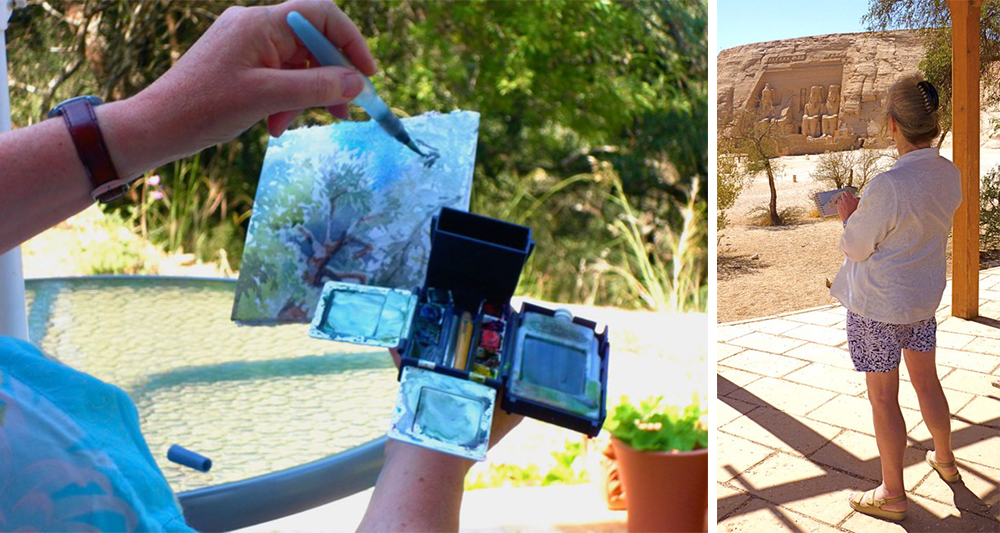
There are two basic methods of paint application
To avoid the distraction of colour, I have used monochromatic illustrations.
Wet on Dry layered washes.
JS Cotman was an exponent of this technique which is particularly appropriate for controlled and detailed painting e.g. buildings, townscapes, botanical subjects, requiring smoother paper for cleaner-edged marks. ‘Sultry Day’ below left, has had four applications (thoroughly dried between each) of the same wash mixture to gradually intensify the tone.

Textural combinations of wet, damp and dry brush and paper.
Historically, JMW Turner was a great exponent of this expressive and faster method. Used, when driven by a sudden desire to record events on his travels or, like the Impressionists, a unique moment of weather, light and time. Using a rough, cotton rag paper extends the range of texture. The image on the right above, ‘Snow in Graffham’ was painted first using wet on wet, then dry on wet for the sky, snow and distant trees. I added sharp wet on dry and speckled dry on dry trees to finish once the underpainting was dry.
The Rewards of ‘Playing attention’
Watercolour teaches me that – though I cannot master it – I can, by watching how water naturally behaves, work with it as my respected friend. Experimental play is the only route to skill. Consequently, the open-minded artist develops a sense of acceptance and childlike joy.
Dynamically describing sights, thoughts and feelings with the insight that inner and outer observation nourishes, brings a sense of being in the moment – a part of the universe.
Expression
Watercolour is not only a medium of self-expression but, in my opinion, THE medium of Self-Expression.
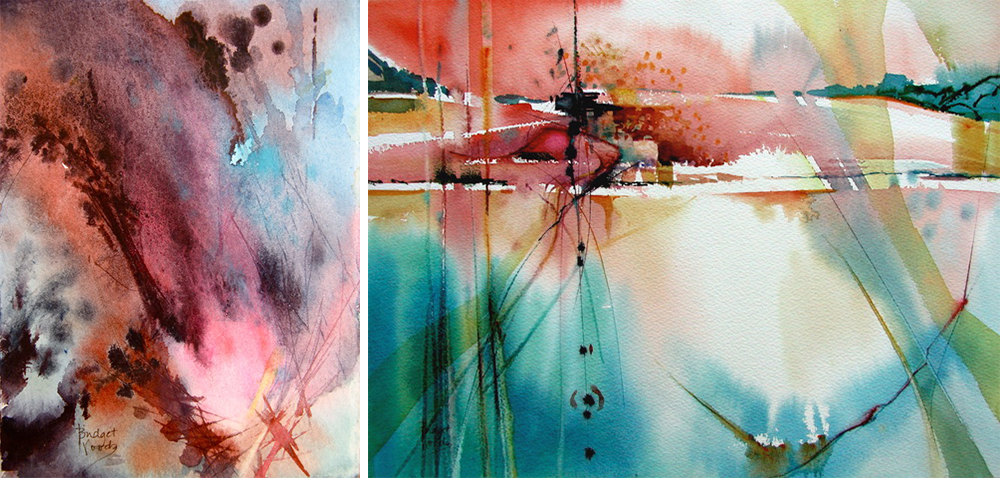
Buy her new book ‘Painting Expressive Watercolour by Bridget Woods‘ on our website.
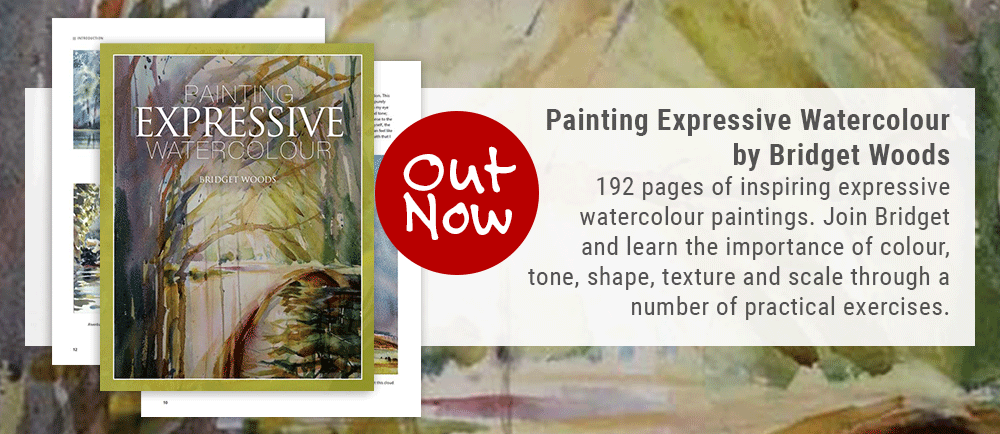


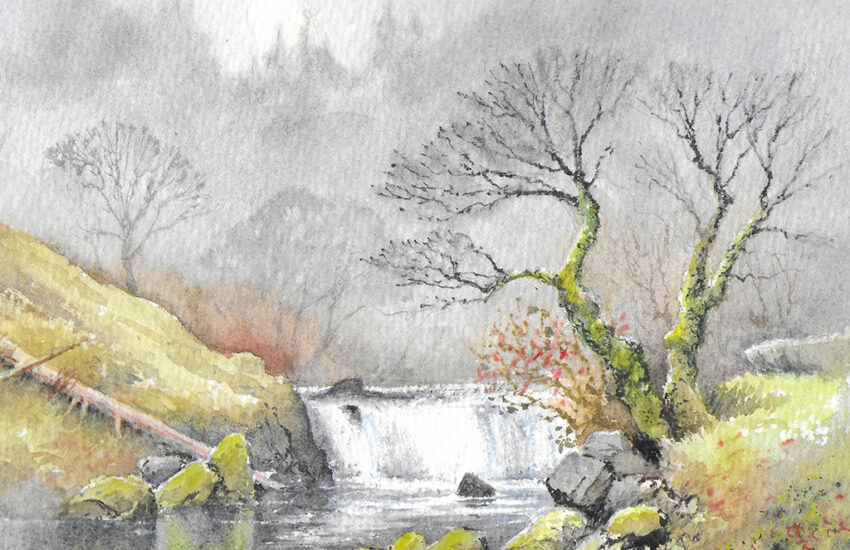
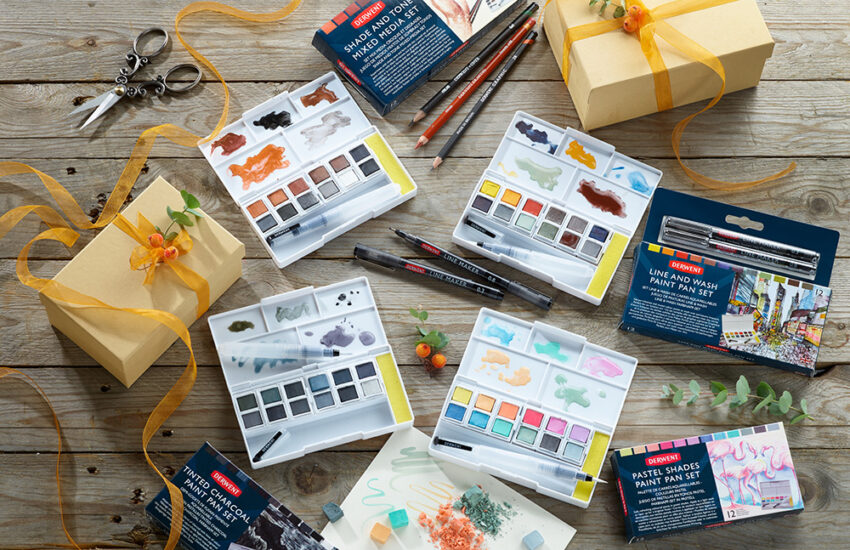
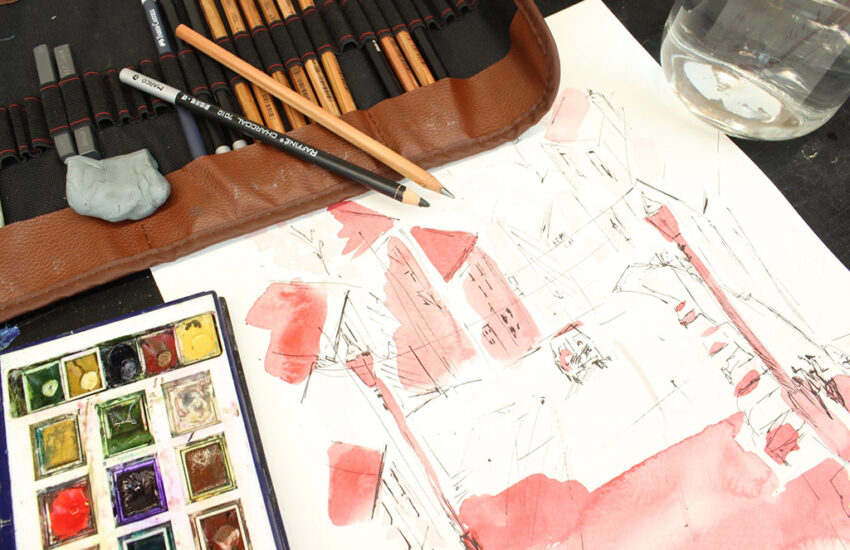
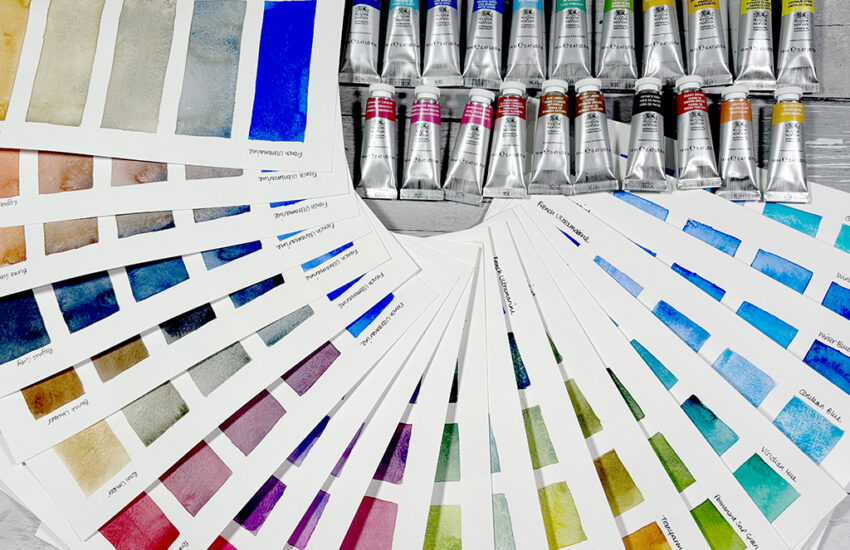
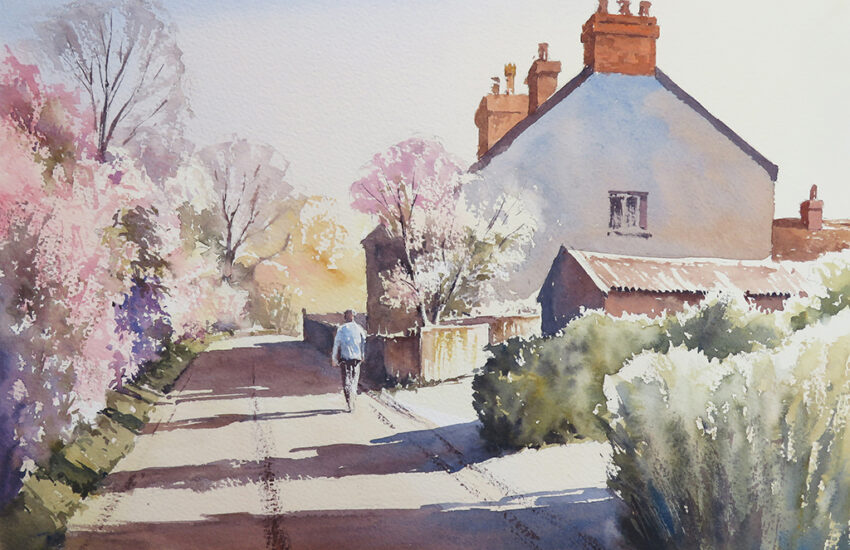


I was very impressed and delighted to see a new and lovely style.
I love her style and skill. It’s truly inspiring.